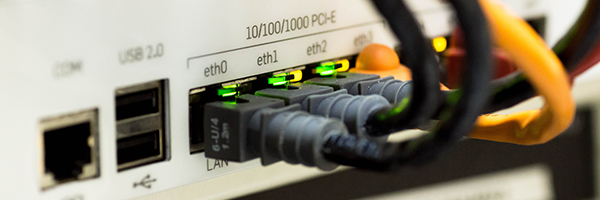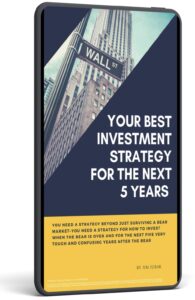 April 20, 2025
April 20, 2025
What You Need to Know Today:
Saturday Night Quarterback on a Sunday says, For the week ahead expect…
I expect a two-ring (at least) circus on Capitol Hill as Congress confronts two years worth of budgets. By law, the President is required to submit a budget for the next fiscal year–in this case the 2026 fiscal year that begins on October 1 2025–by the first Monday in February. Yes, tomorrow, February 3. Maybe you remember, however, that Congress hasn’t passed a budget for fiscal 2025–the fiscal year that began on October 1, 2024. And that the government is operating under a continuing resolution (a CR) that expires on March 14.

Updated Special Report “11 Trump winners and 5 Harris/Trump losers”–first loser picks after Trump’s win
When I posted the previous version of this Special Report back on September 30, I wrote: “I don’t know which candidate will win the election. Right now the polls are within the margin of error on the national level–and even tighter in the seven battleground states that will likely decide the election. But I do know the results on November 5 will move stocks. Some right off the bat even before the results are certified. And more significantly as a new administration clarifies its policy views and takes office.” That has changed just a bit with last night’s victory by Donald Trump. We do know who won and will be the President come January 20. And we do know whose policies will move stocks and the financial markets in general. So let’s see if I can bring my picks and strategic advice up to date.

Watch my YouTube video: Quick Pick Fortinet
Today’s Quick Pick is Fortinet (FTNT). Fortinet is a cybersecurity company with a concentration in firewalls. They have about 15% of the firewall market. Firewall sales have a four or five year cycle as technology develops and companies need to upgrade their security. Morgan Stanley recently predicted the firewall replacement cycle is likely to begin in the second half of 2025. Fortinet is currently at a 20% discount to Palo Alto Networks, the leader in the cyber security stock sector. FTNT is profitable (GAAP and non-GAAP) with their non-GAAP earnings from the second quarter of 2024 showing 35% profitability. Morningstar predicts operating margins will grow to 38%-40% by 2028. I’ll be adding this to my Jubak Picks portfolio with an eye to 2025.

Will S&P 500 earnings continue to accelerate for the fourth quarter of 2024?
I continue to see this rally continuing through the fourth quarter of 2024vbefore faltering in the first quarter of 2025. That call does assume that we’ll get through today’s election and its aftermath with relatively little actual violence–protests in the streets from the losing side and lots of court cases, but no mass armed violence. And it assumes that projected earnings growth in the fourth quarter will live up to expectations and show the highest growth rate in all of 2024. No one knows what this post-election period will bring. So let’s move onto assumption #2: How likely is it that fourth quarter growth will hold up?

Pick #7 CNH Industrial for my Special Report “10 new stock ideas for an old rally”
Today I added CNH Industrial (CNH) as Pick #7 for my Special Report “10 new stock ideas for an old rally.” I also added the stock to my Jubak Picks Portfolio. Here’s what I wrote:
I like farm equipment maker CNH Industrial for the same reason I own Deere (DE) in my long-term 50 Stocks Portfolio. In the long term the world’s farmers are facing a huge challenge: produce more food as an increasingly chaotic climate makes growing stuff harder and harder. One important piece of the solution is a new generation of intelligent farm equipment that uses artificial intelligence to guide everything from when to plant to when to fertilize. At the moment, though, I like CNH more on price. CNH, the #2 farm equipment maker, is invitingly attractive because it is so cheap, absolutely and in comparison to Deere.

Pick #6 Fortinet for my Special Report “10 new stock ideas for an old rally”
Today I added Fortinet (FTNT) as Pick #6 for my Special Report “10 new stock ideas for an old rally.” I also added the stock to my Jubak Picks Portfolio. Here’s what I wrote:
There’s a long-term buying cycle in the firewall cyber security sector.

I just added moves 5,6, and 7 to Part 2 of my Special Report: Your 10 Best Moves for the Rest of 2023
I added three more moves to the four that I’d posted yesterday to bring the total moves in Part 2 of my Special Report up to 7.
Live Market Report (20 minute delay)

Believers in Goldilocks spin Friday’s PCE inflation report to say Fed will end interest rate increases “soon”
Friday’s PCE (Personal Consumption Expenditures) index, the Federal Reserve’s preferred inflation, measure gave believers in Goldilocks just enough to keep the fairy tale alive. The all-items index rose 0.3% in February. That works out to a 5% annual rate. The month-to-month increase was less than expected by economists surveyed by Bloomberg–who were looking for 0.4%. The core index, which excludes food and energy prices, also rose by 0.3% month to month. Again less than expected. That put the annual core inflation rate at 4.6%.

Bookkeeping: I added NVDA, MSFT, and Adobe to my Volatility Portfolio on March 24
In Step #3 of my Special Report: 5 Moves for the Next 5 Months, on March 24 I added three Big Tech stocks–Microsoft (MSFT), Adobe (ADBE), and Nvidia (NVDA) to my Volatility Portfolio ahead of earnings season. My theory, explained in that post was that we were facing a tough earnings season for most stocks and that reliable earnings growth from Big Tech would make those stocks look like a safe haven in a period when the Standard & Poor’s 500 as a whole was projected to show a drop in earnings. (I also owned up to my mistake in selling Nvidia back on February 16. That was just wrong. More on why I was wrong and why I’ve changed my mind on that in a post tomorrow or so.)

Please Watch My New YouTube Video: Quick Pick Charles Schwab Put Options
Today’s Quick Pick is Charles Schwab (NYSE: SCHW) Put Options. Put options will become more valuable as the stock goes down in price. This has been a lousy year for Schwab with the stock currently down about 34% YTD. The reason for this is Schwab makes most of its money on the interest rate spread. Schwab stashes “excess” cash in customer accounts in sweep accounts that pay a very low rate of interest, and Schwab invests that cash in Treasuries, mortgage-backed assets, etc. at higher yields. This works when the overall rate of interest is low because customers have a relatively small incentive to actively move their cash to higher-yielding vehicles. When the Fed raises interest rates, however, some people who had formerly kept their money in these low-return accounts will move their cash to higher-yielding alternatives (often still within Schwab.) This reduces the interest spread that Schwab collects since the company now has to pay more in interest to retain those customers. In addition, Schwab invested that cash in long-term Treasuries and mortgage-backed assets, leaving the company sitting on a lot of unrealized losses in its bond portfolios as bond prices fell as interest rates moved higher. I question whether or not Schwab will be able to meet analysts’ expectations and/or warn on future results when it announces earnings on April 17. I would suggest Put options before the announcement. I added the May 19 Put to my Volatility Portfolio yesterday. For more options plays, subscribe to JubakAM.com.

Fed officials up the rhetoric on need for at least one more interest rate increase–and market is listening
Today the Federal Reserve mounted a full-court press (Hey, it is March Madness time, right?) on the need for at least one more interest rate increase before any pause. And financial markets were listening.

Well, that didn’t take long–I’m buying Call Options on the VIX tomorrow
Today March 29, the VIX dropped again, losing another 4.01% to 19.10. So I’ll be buying the June 21 Call Option with a strike price of 23 tomorrow. A contract for 100 shares closed at $305 today. This buy will go into my Volatility Portfolio.

Please Watch My New YouTub Video: Complacency Is Rising–Again
Today’s topic is: Complacency is Rising – Again. I’ve been following the VIX closely throughout the recent market turmoil. The VIX is often called the “Fear Index” as it measures how much people are willing to hedge against the S&P. As you can imagine, the VIX shot up with the recent bank scare but has been coming back down again recently. The market has decided very quickly that the banking crisis is no longer a problem and they just aren’t all that worried. Similarly, the ICE Bank of America Merrill Lynch MOVE Index (^MOVE), considered the “VIX of the bond market,” showed a big jump during the Silicon Valley Bank and Credit Suisse problems, but has quickly started to come back down. These are two areas where I would buy a call option if they get low enough. I will not buy puts on these because I don’t think this volatility is over. Go to JubakAM.com to follow my volatility and options portfolios.

Housing contracts rose in February; market says “maybe” a housing bottom
Contracts to buy U.S. previously owned homes increased for a third straight month in February. On Wednesday, the National Association of Realtors said its Pending Home Sales Index, which measures signed contracts, rose 0.8% last month to the highest level since August. Economists polled by Reuters had forecast contracts, which become sales after a month or two, would fall 2.3%.

Buying Schwab Put Options on outlook for a very rocky April 17 earnings report
This is shaping up as a very tough earnings season for all financial stocks. But no stock looks more exposed to a short-term hit than Charles Schwab (SCHW.) Which is why I’m adding the May 19 Put Options with a strike of $52.50 to my Volatility Portfolio tomorrow, March 29.

More economists worry about Friday’s PCE inflation report
Now it’s not just the Cleveland Fed’s NowCast that’s pointing at problems in Friday’s PCE (Personal Consumption Expenditures) index inflation report. Economists surveyed by Bloomberg project that the core PCE index–that is excluding food and fuel prices–climbed 0.4% in March from February. Year over year, the core PCE index is projected to be up 4.7% with the all-items rate up 5.1%.

Oil rallies, finally
Oil rallied today, Monday, March 27, for the first time in, well, quite a while. Oil is likely to finish with a loss in March, for a fifth monthly drop. So today’s move, which saw West Texas Intermediate jump by almost 55, marked quite a shift in direction.

Please Watch My New YouTube Video: Trend of the Week Is a Minsky Moment Ahead?
This week’s Trend of the Week is Minsky Moment Ahead? Hyman Minsky was an economist who studied credit cycles. Minsky died in 1995, but in 1998, during the Russian Ruble and Asian Currency Crises, economist Paul McCulley recognized the situation was one described by Hyman Minsky, and dubbed it a “Minsky Moment.” A credit cycle starts when credit is abundant and banks are lending generously and gradually taking bigger and bigger risks. Eventually, an event like the Silicon Valley Bank failure hammers the banks, causing them to pull back and tighten their lending to a greater degree than at the start of the cycle. It’s a classic case of locking the barn door after the horses have escaped. Once the crisis is in place banks tighten their lending standards and this causes a constriction of credit when the economy really needs credit–a Minsky Moment. Right now, there are a lot of contractionary forces at work in the economy, including the Fed’s raising of interest rates while selling off some of its balance sheet. The two areas that will likely be hit hardest by these contractions and the Minsky cycle are emerging markets, which are having trouble repaying debt from lenders such as China that are not willing to renegotiate, and the start-up market, where private companies are finding it harder to raise enough capital to keep their companies going. If you’re holding emerging markets stocks or new tech stocks with an eye to the future, make sure you’re comfortable with where they are presently, and watch that they’ve been able to secure the funding they need. Be careful out there.

The Search for the Next Shoe to Drop in the Bank Crisis Goes On: What About Commercial Real Estate?
Officials from the White House, the Treasury Department, and the Federal Reserve, are huddling over risks to the banking systems from the $20 trillion market for commercial real estate. Analysts told the Washington Post that this market could be heading for a crash over the next two years thanks to higher interest rates and continued softness in demand after Covid shutdowns. One reason that this market is getting extra attention is that regional banks, already under pressure from problems at Signature and First Republic banks, play a big role in this market for loans to commercial real estate.

Venture capital financing dries up
It’s not like it was easy to find venture capital financing before the collapse of Silicon Valley Bank. It’s just that now finding money to fund a startup or raising a round of follow-on financing has gone from difficult to almost impossible. In the last three months of 2022 venture capital funding fell by 61%, according to Pitchbook. Now many more venture capital investors are sitting on the sidelines.

Saturday Night Quarterback says, For the week ahead expect…
Look for another inflation report this week. This time–on March 31–it’s the Federal Reserve’s favorite inflation model, the Personal Consumption Expenditure (PCE) index. And, there’s potential trouble in this report–if projections from the Cleveland Federal Reserve Bank’s Inflation NowCast are accurate.

Goldilocks fails to capture the Federal Reserve (sort of)
Goldilocks is just about the only thing keeping the current stock market afloat in the face of a storm of worry from a banking crisis, to stubbornly high inflation, and signs of a cooling economy. The Goldilocks story says, Don’t worry about all that. The Federal Reserve is about to pivot on interest rates. At its May 3 meeting, the Federal Reserve Open Market Committee might raise interest rates by 25 basis points but that will be the last interest rate increase. And then the Fed will move to start cutting interest rates in the second half of the year with financial markets pricing in as much as 200 basis points of cuts by the end of 2024. And all this will happen, too, without a recession, as the Fed engineers a successful soft landing of the economy and a significant slowdown in inflation.
If you believe that, you should be buying stocks. I don’t believe it. And more importantly, the bond market doesn’t believe it.

Move #3 in my Special Report: 5 Moves for the Next 5 Months
Here’s Step #3 in my 5 Steps for the Next 5 Months Special Report

So what was today all about?
I argued in my YouTube video on Tuesday that this was a market without a trend. So far that seems about right.

Please Watch My New YouTube Video: Quick Pick KBE Bank Stocks ETF
Today’s Quick Pick is SPDR S&P Bank ETF (NYSEARCA: KBE). I’m not suggesting buying this now: I’m suggesting you watch this and buy Put Options on this ETF when the time is right. The SPDR S&P ETF is approximately 80% regional banks. As you can imagine, it took a huge hit during the recent banking scare and would have been a great Put Option last week during the plunge in the sector. Options are a way to leverage the volatility of this market. The recent exit of my VIX Call Option resulted in a 100% gain in about a week. For KBE, I’d look at Put Options that climb in value as the price of the ETF sinks. At the time of recording, KBE was selling at about 37. I’m looking at the June 16 Put at a strike price o 38. At the moment, the Put is deeply underwater but I’ll continue to watch this rally to see when it’s worth it to jump in. At the moment, I suggest you watch this one: Don’t buy just yet but wait for the next shoe to fall in the banking crisis.

Please Watch My YouTube Video: Where is the Contagion?
Today’s topic is Where is the Contagion? I’m not talking about viral diseases, I’m talking about financial market contagion. After the collapse of Silicon Valley Bank and the subsequent shutdowns of Signature and Credit Suisse, investors are naturally asking, who’s next? What happens if this pops up in places we aren’t expecting? The problem is in the financial world, many financial companies and systems are connected. They can act as guarantors for one another, or have obligations to each other that see risk passing from one bank to another. All this creates opportunities for contagion to spread. One of these “contagions” to look at is AT1 bonds, otherwise known as CoCos. At1 bond issued by Credit Suisse become worthless when that bank was taken over by UBS. There are about $280 billion worth of AT1 bonds in the world at the moment. The question is, who owns them? Bloomberg discovered both PIMCO and Invesco hold these CoCos, though not at a level that would cause their collapse. If you’re invested in a bond fund, it’s important to know which kinds are in their portfolios. that’s especially true in the case of bond funds that have looked to beat the yield of treasuries by buying riskier classes of bonds.

Fed raises interest rate by 25 basis points as expected
Not a whole lot of news out of today’s breathlessly awaited meeting of the Federal Reserve’s Open Market Committee. The committee raised its short-term benchmark rate by 25 basis points to a range of 4.75% to 5%. That move had about 80% odds in its favor going into the meeting. The Dot Plot projections kept the interest rate forecast at 5.1% for the end of 2023. That was unchanged from the December Dot Pot projections.



